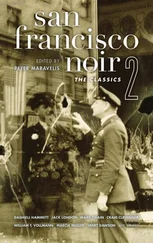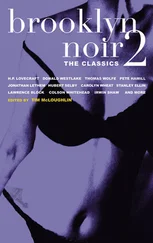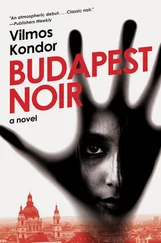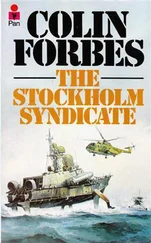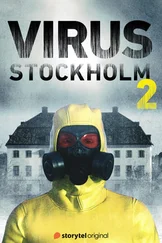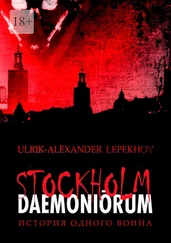Caroline Åberg - Stockholm Noir
Здесь есть возможность читать онлайн «Caroline Åberg - Stockholm Noir» весь текст электронной книги совершенно бесплатно (целиком полную версию без сокращений). В некоторых случаях можно слушать аудио, скачать через торрент в формате fb2 и присутствует краткое содержание. Город: New York, Год выпуска: 2016, ISBN: 2016, Издательство: Akashic Books, Жанр: Детектив, на английском языке. Описание произведения, (предисловие) а так же отзывы посетителей доступны на портале библиотеки ЛибКат.
- Название:Stockholm Noir
- Автор:
- Издательство:Akashic Books
- Жанр:
- Год:2016
- Город:New York
- ISBN:978-1-61775-297-1
- Рейтинг книги:3 / 5. Голосов: 1
-
Избранное:Добавить в избранное
- Отзывы:
-
Ваша оценка:
- 60
- 1
- 2
- 3
- 4
- 5
Stockholm Noir: краткое содержание, описание и аннотация
Предлагаем к чтению аннотацию, описание, краткое содержание или предисловие (зависит от того, что написал сам автор книги «Stockholm Noir»). Если вы не нашли необходимую информацию о книге — напишите в комментариях, мы постараемся отыскать её.
Copenhagen Noir
Helsinki Noir
Stockholm Noir — читать онлайн бесплатно полную книгу (весь текст) целиком
Ниже представлен текст книги, разбитый по страницам. Система сохранения места последней прочитанной страницы, позволяет с удобством читать онлайн бесплатно книгу «Stockholm Noir», без необходимости каждый раз заново искать на чём Вы остановились. Поставьте закладку, и сможете в любой момент перейти на страницу, на которой закончили чтение.
Интервал:
Закладка:
My own living arrangements were a bit marginal for some time. I had moved from one temporary address to another. It’s funny how memory can trip you up when it comes to years gone by. I remember 1964 to 1967 as three years of loneliness, filled with paranoia and masturbation. But if I check the facts, I was actually married during those years — in fact, I got married twice. And I remember relationships on the side as well. I remember one woman, also married, who would sneak off from her job as an office manager to meet me at number 37. Perhaps you’re wondering why I wasn’t living with my wife if I was, indeed, married. But I couldn’t live with her, even though we were friends, because she, too, was homeless. In those days she was living temporarily at the apartment of a writer on Västerlånggatan in Old Town.
By the age of twenty-six, I was riding a career roller coaster. I was part of the cultural life of the capital city. The marriage, if you’re still wondering about that, was not exactly burning brightly. Although we weren’t living together, my wife and I, we’d get together for work. She was in the theater and was an excellent fashion model. The fashion house Mah-Jong bought our photographs. We hadn’t gotten around to getting a divorce, because in the late sixties people didn’t bother with empty conventions like that.
I had built a somewhat precarious living as a photographer by visiting the editorial offices of all the magazines in Stockholm, showing them my photos. And on those occasions, I would make an effort to seem like a congenial coworker. Some editors gave me small assignments; they would test me and then try someone else. In those days, everyday transactions were done on a cash basis. Whenever I’d been given a job and delivered my pictures, I’d go to the cashier and pick up an envelope with bills. I usually thought the amount was too small. My ability to use a camera was greater than my ability to fit in with the job and its jargon.
This jargon had no words for the ideas I turned over in my mind — for example, the words to seriously define the problems with/of photography. The most important of these was the one most often ignored: the psychic energy needed for each photograph. They say when photography was invented, around 1840, many people refused to be photographed as they believed the camera would steal their living souls and leave them as empty shells. In a way, that is true. But it’s not the subject who becomes an empty shell, it’s the photographer. Every exposure demands concentration. I did not use a flash (my technique was based on natural light and the steadiness of the tripod), but the inside of my own head flashed each time I hit the cable release. Migraines lie in wait for every photographer.
Another issue in photography: the subject is flattened and always smaller than reality. Larger prints don’t help; the real landscape or cityscape is at all times larger than the print.
Theoretically, a portrait could be different. August Strindberg, when he contemplated opening a portrait studio in Berlin, had the theory that the human soul could be captured only if the negative was the same size as the subject’s face. He had written a short story he would read while the picture was being taken. The person sitting for the photograph had to remain perfectly still while the photographer (in this case, also the writer) would remove the cap from the lens and then put it back on it after the last line was read. The story, therefore, became a timer replacing the mechanical one. The story lasted twenty-five seconds. Strindberg’s homemade lens was as slow as the glass plates of the 1880s. The negative format was probably 24 x 36 cm and the glass plates had to be specially made. Not impossible, this required painting light-sensitive emulsion onto glass plates in a darkroom. On the other hand, he could never get his homemade camera — with a simple lens from a kerosene lamp — to work. You can have many plans — but not all of them will be realized. Just ask me.
Capturing the range of exposure is another problematic factor. Think of a room right before twilight — outside the window a street is lit by the setting sun. For the person inside, it is easy to differentiate both the light outside and the darkness inside, thanks to the human eye’s exceptional optical range. Now think of a photograph. It’s necessary to choose an exact exposure. If the outside is clear, the inside is black. If the room is clear, the outside is completely white, or washed out as we professionals say.
But I had my subjects — not portraits of people, as I was much too inhibited for that. Strindberg’s excellent ideas about a portrait studio were not possible for me considering my own level of expertise. But cityscapes, where people appeared at a distance, that was my specialty. I saw them, but they didn’t see me. I liked to study their movements in an almost scientific way.
The movements of people. Yes. Very interesting. Perhaps you remember the old theory that cars about to turn didn’t really need their turn signals? The beginning of the turn, that subtle initial indication, the slight deflection of the front wheels as they turn to the left or to the right, should be enough for other drivers to know what would happen. People’s walking movements can be interpreted in the same way. That man there will soon turn — or stop; that woman with him — or not — are they walking beside each other because they are friends or colleagues, or are they strangers who just happened to be walking near each other at the same moment and will soon head in different directions? All of this is endlessly fascinating. You could draw them as figures on a graph.
One November day, the snow-covered but sunny Drottninggatan outside my window felt like the right choice as my photographic subject. An f-stop of 16 and five hundredths of a second. In spite of the strong light, mysterious figures seemed to sneak about trying not to be seen. I wanted to capture them, list them, make it clear to myself what was about to happen. But in the photographs, they were always turned away. Then I decided to take pictures of the room instead. The window became a rectangle without detail. The floor covered in glass shards and dirt. The furniture smashed. Artistic pictures, perhaps, but to what end?
The spirit of the times: the realization that injustice was exploding in countries all over the world demanded that stenciled pamphlets must be written and distributed. The subjects included Vietnam being bombed by the United States and France, with an independence movement in the North. Spain, Greece, and Portugal — dictatorships all, with Portugal fighting a gruesome war against the independence movement in their colony of Angola. Latin America, where many regimes relied on torture. South Africa, with its unsustainable apartheid system. Just a few examples. We young people were outraged by all the neglect and oppression going on in the world. Perhaps we were less observant when it came to the disparity on our own streets.
During the evening, I would observe the movements of the people outside my window and develop my own theories. On the other side of Drottninggatan, all the buildings had already been torn down. A large construction site was extending in all directions around a gaping pit in the center to form a so-called super-ellipse. The remaining residents had to use temporary stairs and wooden walkways. These were rebuilt every week and were not easy to navigate.
The patterns that people made, evening after evening, interested me very much. Three men were different from all the others. They seemed together and yet were not. They moved stealthily as if they did not want to be seen. They spied and wrote down secret things in their black notebooks. I would sketch them and their movements. My sketchbook was filled with page after page of identical labyrinths. I called them the Three Wise Men. Agent Caspar, Agent Melchior, and Agent Balthazar. The patterns they made would form the letter Z or the number 8. What did they want? Sometimes a fourth person would appear, a woman in a brown dress and a small hat. She seemed to be their boss. In my notes, I called her Maria. She’d use slight tilts of her head to indicate to the other three where they should go.
Читать дальшеИнтервал:
Закладка:
Похожие книги на «Stockholm Noir»
Представляем Вашему вниманию похожие книги на «Stockholm Noir» списком для выбора. Мы отобрали схожую по названию и смыслу литературу в надежде предоставить читателям больше вариантов отыскать новые, интересные, ещё непрочитанные произведения.
Обсуждение, отзывы о книге «Stockholm Noir» и просто собственные мнения читателей. Оставьте ваши комментарии, напишите, что Вы думаете о произведении, его смысле или главных героях. Укажите что конкретно понравилось, а что нет, и почему Вы так считаете.


